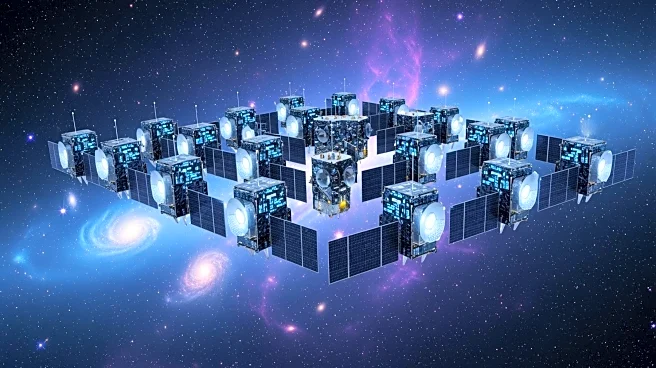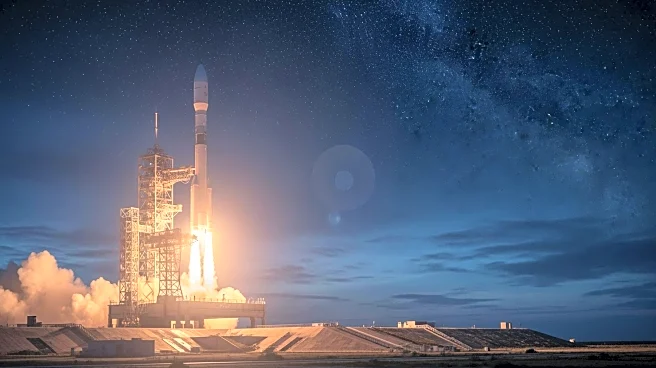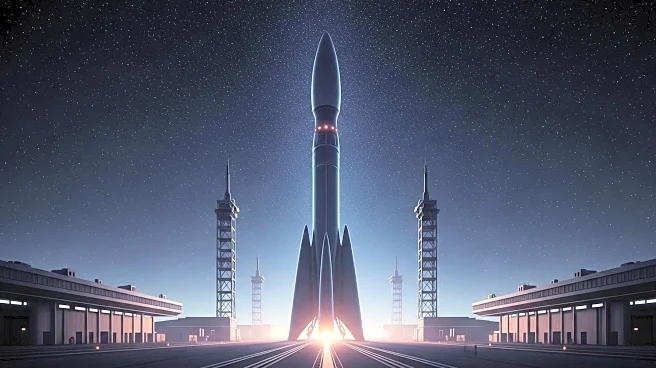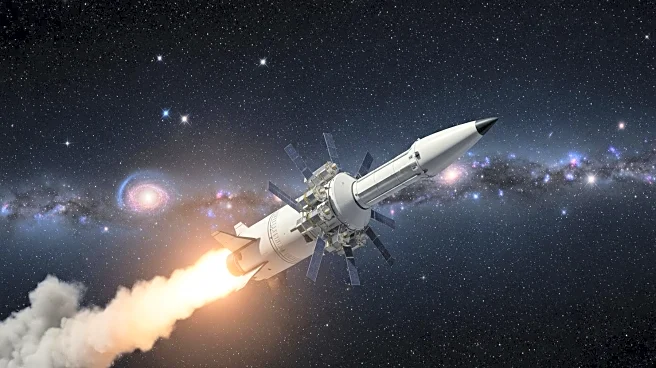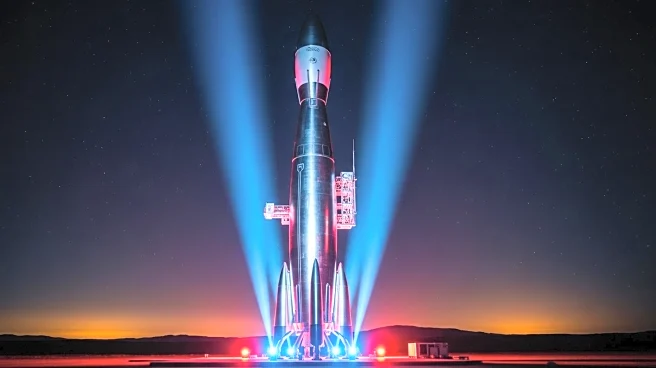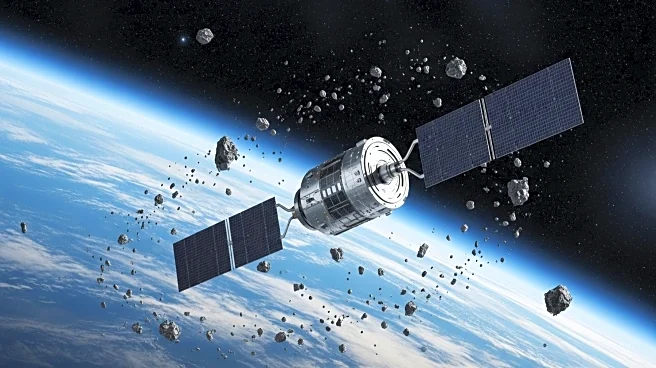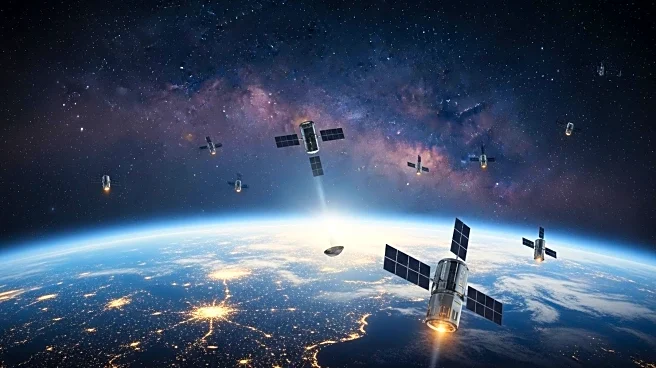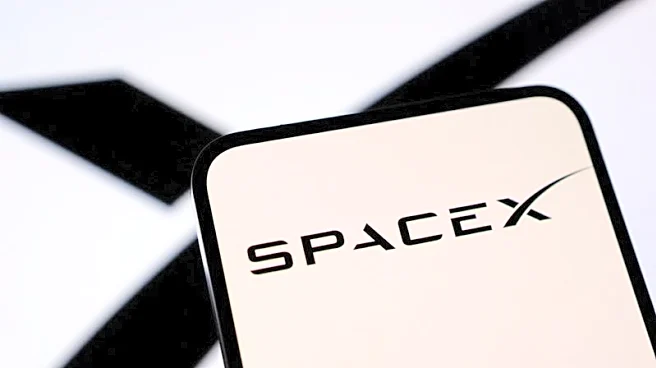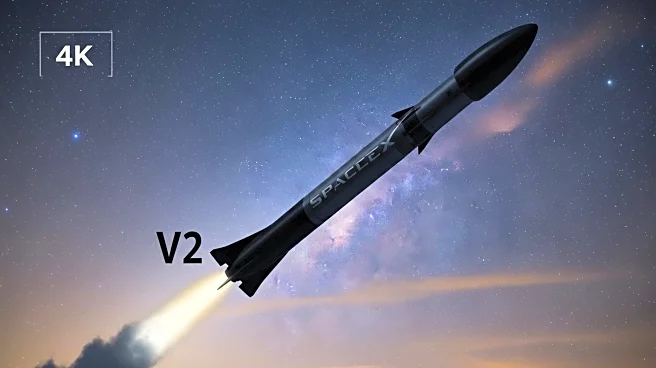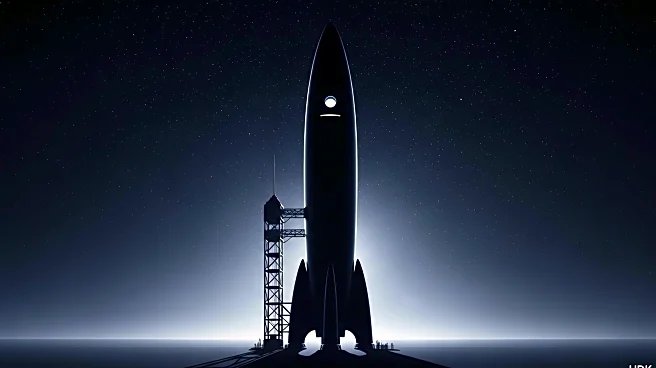What's Happening?
SpaceX successfully launched 28 Starlink satellites into low Earth orbit from Cape Canaveral Space Force Station. The launch took place early Thursday morning, adding to the existing network of 8,600 Starlink satellites.
This mission, known as Starlink 10-52, marks the 130th Falcon 9 launch of the year and the 91st dedicated to expanding SpaceX's satellite constellation. The launch was conducted under favorable weather conditions, with a 95% chance of good weather predicted by the 45th Weather Squadron. The Falcon 9 rocket's first stage booster, identified as B1095, was recovered using the drone ship 'Just Read the Instructions,' marking its third flight and the 138th successful landing on this vessel.
Why It's Important?
The expansion of the Starlink satellite network is significant for global internet coverage, particularly in remote and underserved areas. SpaceX's continued launches enhance the capacity and reliability of the Starlink service, which aims to provide high-speed internet access worldwide. This development is crucial for bridging the digital divide, offering connectivity to regions lacking infrastructure. The successful recovery of the Falcon 9 booster also underscores SpaceX's commitment to reusability, reducing costs and environmental impact associated with space launches. The ongoing deployment of Starlink satellites positions SpaceX as a leader in satellite internet services, potentially influencing market dynamics and competition in the telecommunications industry.
What's Next?
SpaceX is expected to continue its high-tempo launch schedule, further expanding the Starlink constellation. Future launches will likely focus on increasing satellite density to improve service quality and coverage. As the network grows, SpaceX may face regulatory challenges and competition from other satellite internet providers. The company will need to address concerns related to space debris and orbital congestion. Additionally, SpaceX's efforts to enhance Starlink's capabilities could lead to partnerships with governments and businesses seeking reliable internet solutions. The success of these missions may also influence SpaceX's plans for other ambitious projects, such as Mars colonization and deep space exploration.
Beyond the Headlines
The rapid deployment of Starlink satellites raises ethical and environmental considerations. The increasing number of satellites in orbit contributes to space debris, posing risks to other space missions and the long-term sustainability of space activities. There are also concerns about the impact on astronomical observations, as the satellites can interfere with telescopic imaging. SpaceX's approach to satellite internet challenges traditional telecommunications models, potentially disrupting existing service providers. The company's focus on global connectivity aligns with broader technological trends, emphasizing the importance of internet access as a fundamental right. These developments may prompt discussions on regulatory frameworks and international cooperation in space governance.
